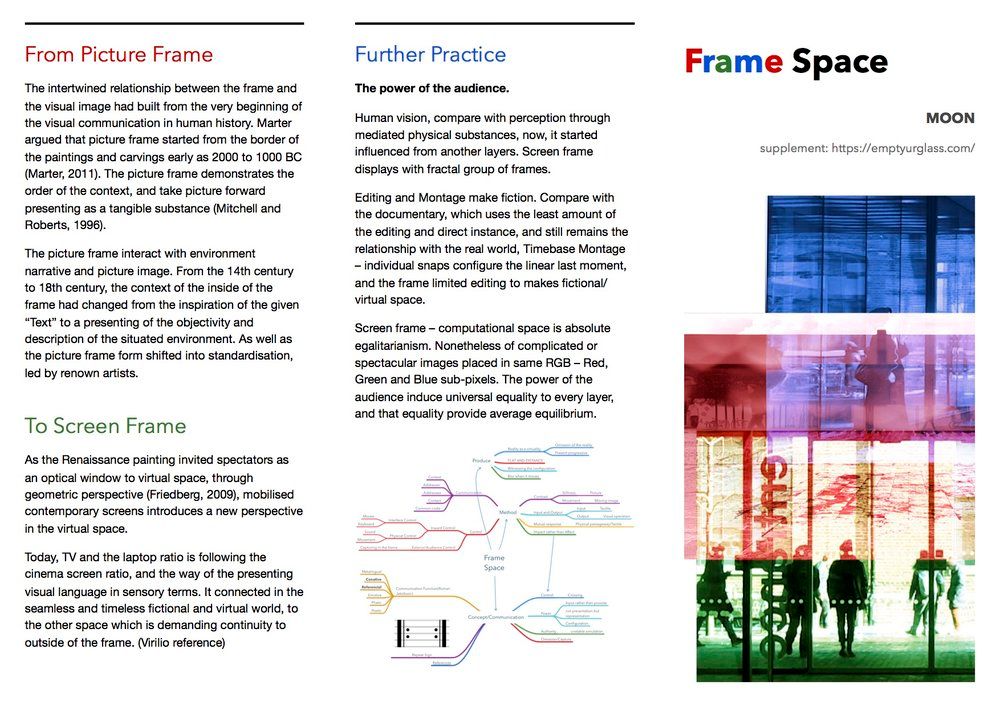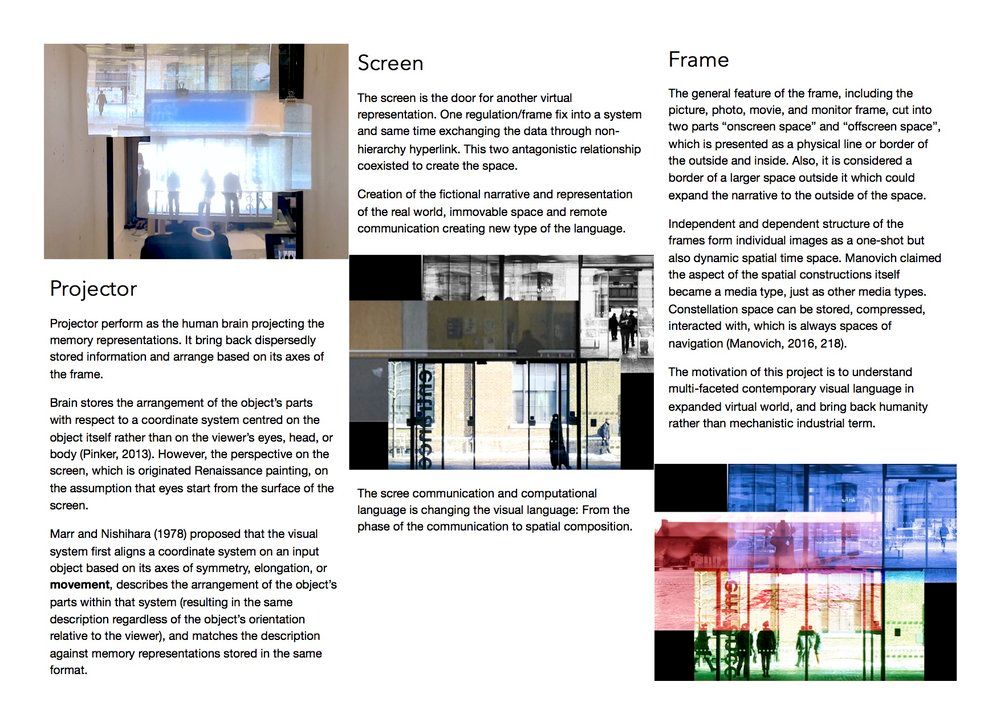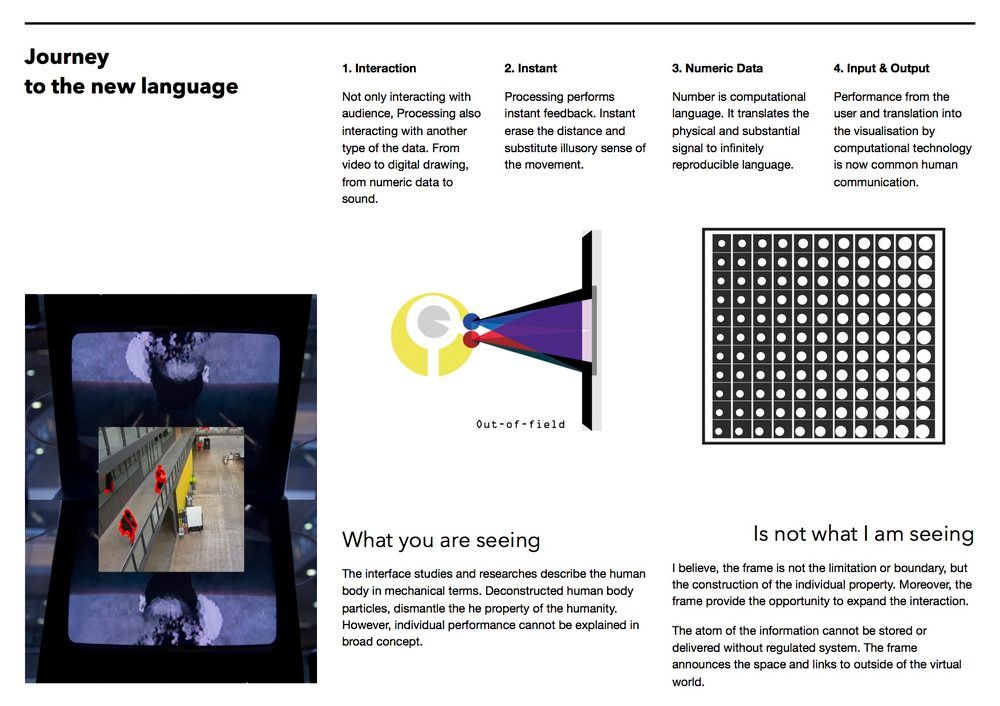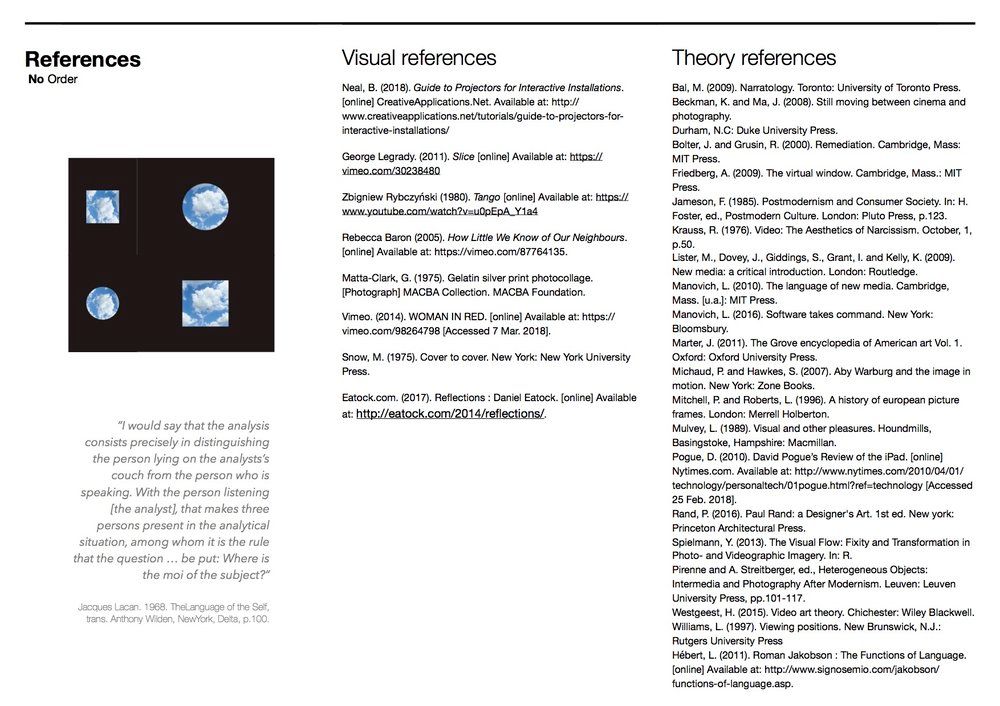Frame Space
Picture Frame
The intertwined relationship between the frame and the visual image had been built from the very beginning of visual communication in human history. Marter argued that picture frames started from the border of the paintings and carvings as early as 2000 to 1000 BC (Marter, 2011). The picture frame demonstrates the order of the context and takes the picture forward, presenting it as a tangible substance (Mitchell and Roberts, 1996).
The picture frame interacts with the environment narrative and picture image. From the 14th to the 18th century, the context of the inside of the frame changed from the inspiration of the given “Text” to a presentation of the objectivity and description of the situated environment. Also, the picture frame form shifted into standardisation, led by renowned artists.
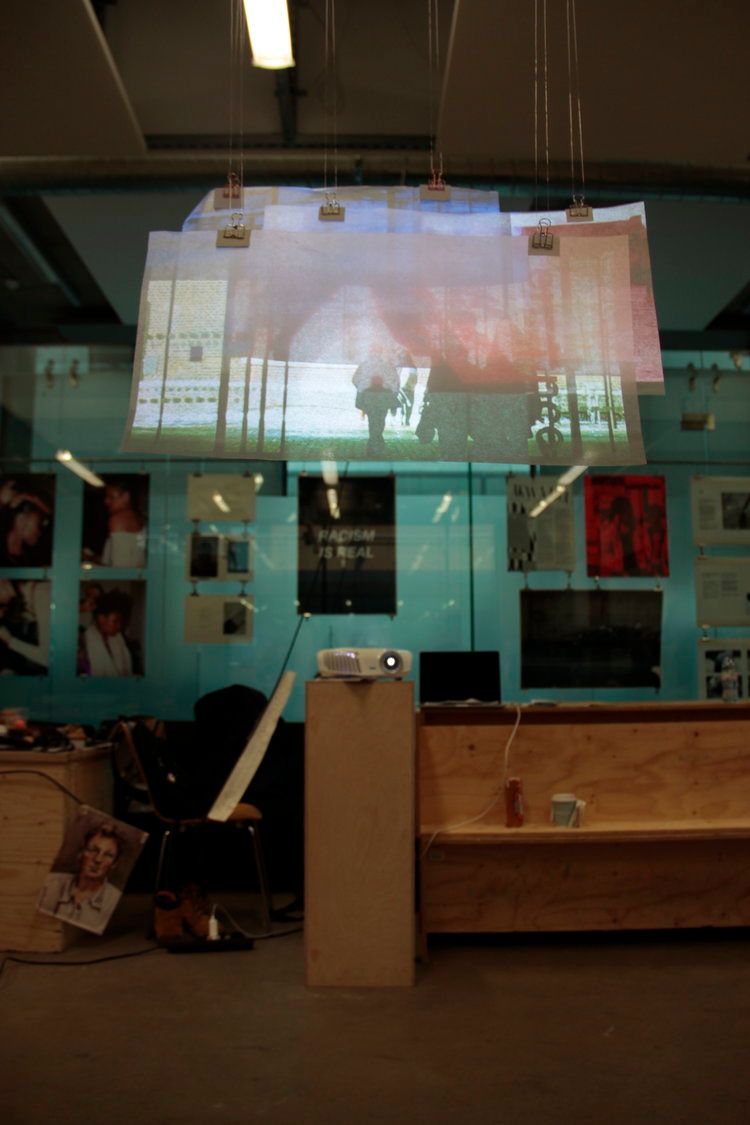
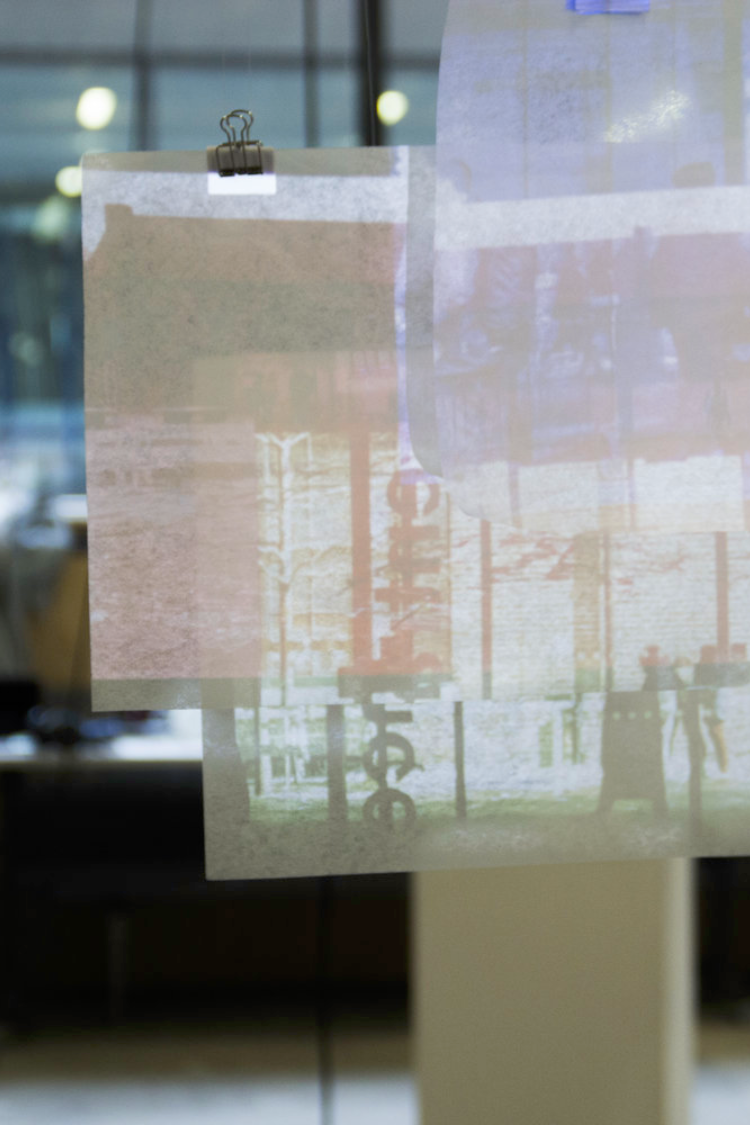
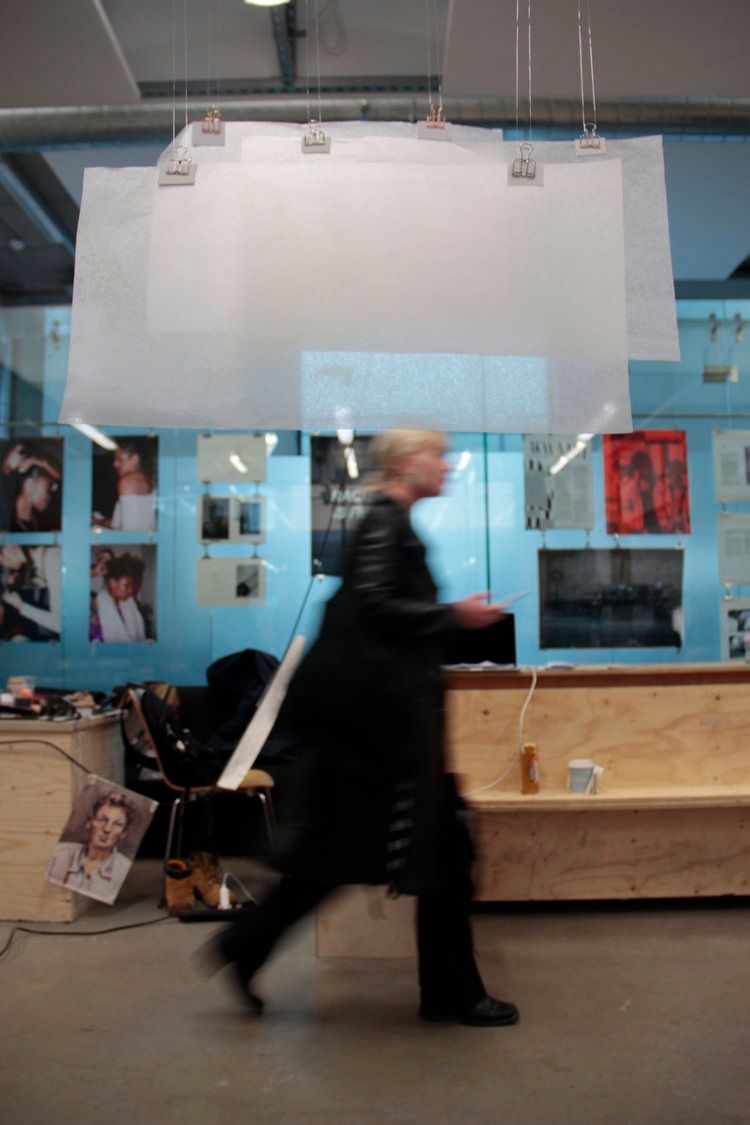
To Screen Frame
As the Renaissance painting invited spectators as an optical window to virtual space through geometric perspective (Friedberg, 2009), mobilised contemporary screens introduced a new perspective in the virtual space.
Today, the TV and the laptop ratio follows the cinema screen ratio and the way of presenting visual language in sensory terms. It is connected in the seamless and timeless fictional and virtual world to the other space, which demands continuity outside of the frame.
The Power of the Audience
Human vision, compared with perception through mediated physical substances, has now been influenced by other layers. Screen frame displays with a fractal group of frames.
Editing and Montage make fiction. Compared with the documentary, which uses the least amount of editing and direct instance, and still retains the relationship with the real world, Timebase Montage – individual snaps configure the linear last moment, and the frame limited editing to make fictional/ virtual space.
Screen frame – computational space is absolute egalitarianism. Nonetheless, complicated or spectacular images are placed in the same RGB – Red, Green and Blue sub-pixels. The power of the audience induces universal equality to every layer, and that equality provides average equilibrium.
Frame
The general feature of the frame, including the picture, photo, movie, and monitor frame, is cut into two parts “onscreen space” and “offscreen space”, which is presented as a physical line or border of the outside and inside. Also, it is considered a border of a larger space outside it which could expand the narrative to the outside of the space.
Independent and dependent structures of the frames form individual images as a one-shot but also dynamic spatial time-space. Manovich claimed the aspect of the spatial constructions itself became a media type, just like other media types. Constellation space can be stored, compressed, and interacted with, which is always spaces of navigation (Manovich, 2016, 218).
This project's motivation is to understand multi-faceted contemporary visual language in the expanded virtual world and bring back humanity rather than mechanistic industrial terms.
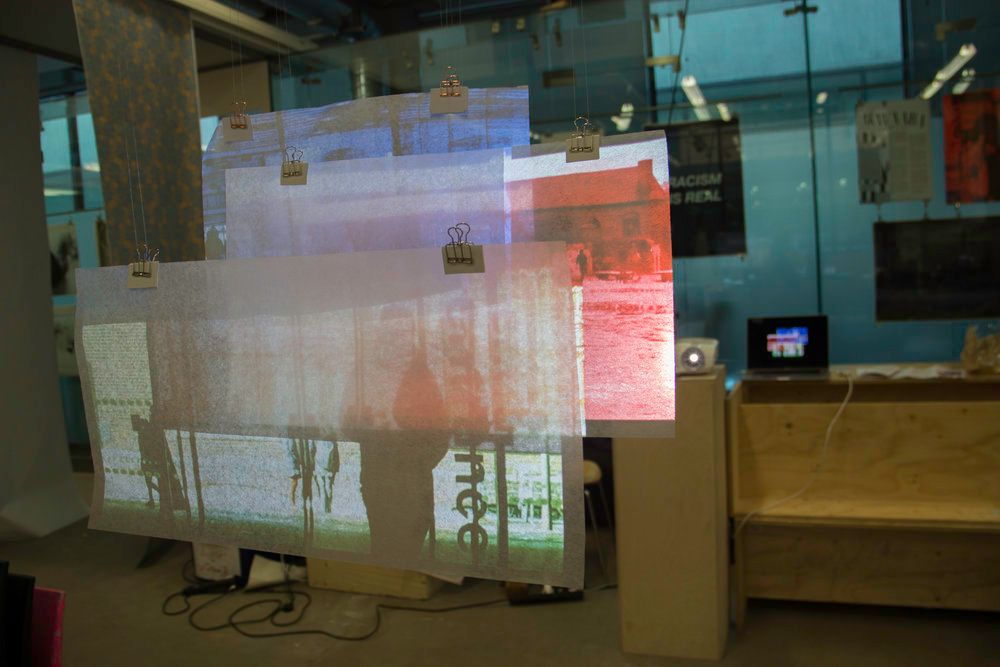
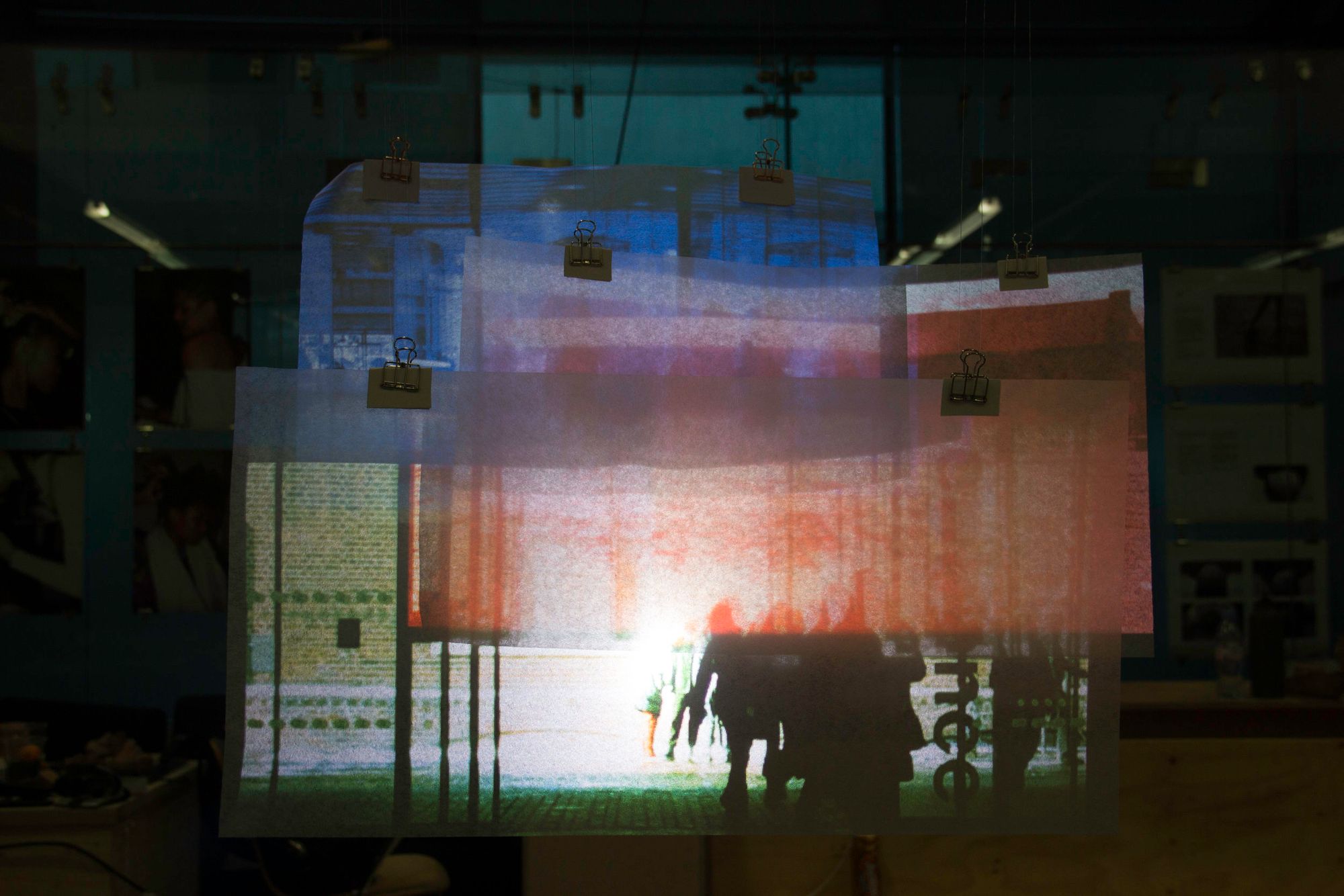
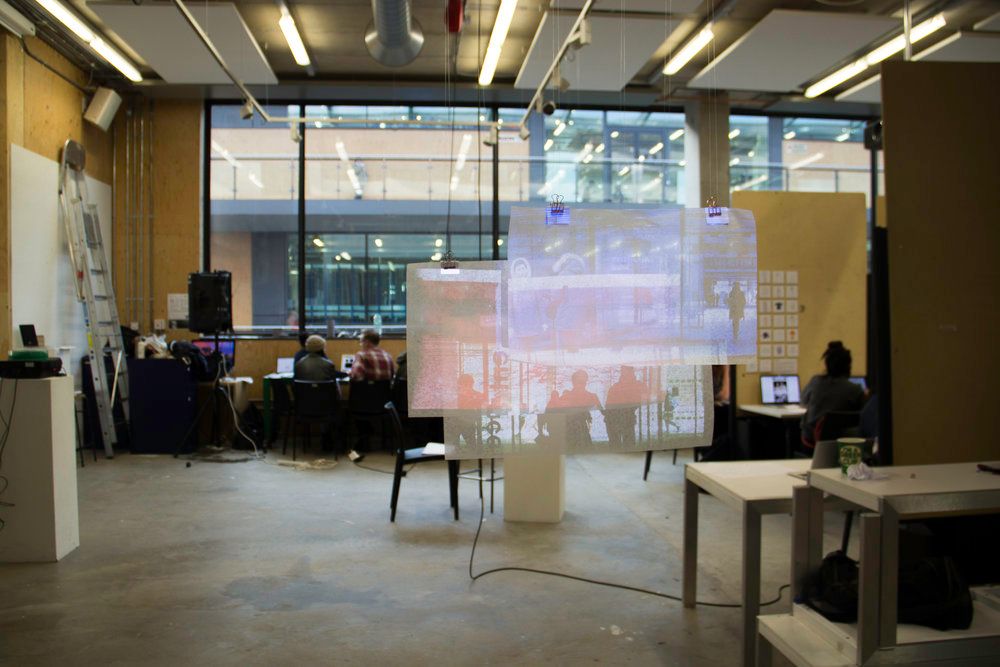
Projector
Projectors perform as the human brain projecting the memory representations. It brings back dispersedly stored information and arranges based on the axes of the frame.
The brain stores the arrangement of the object’s parts with respect to a coordinate system centred on the object itself rather than on the viewer’s eyes, head, or body (Pinker, 2013). However, the perspective on the screen, which originated in Renaissance painting, on the assumption that eyes start from the surface of the screen.
Marr and Nishihara (1978) proposed that the visual system first aligns a coordinate system on an input object based on its axes of symmetry, elongation, or movement and describes the arrangement of the object’s parts within that system (resulting in the same description regardless of the object’s orientation relative to the viewer), and matches the description against memory representations stored in the same format.
Screen
The screen is the door to another virtual representation. One regulation/frame fixed into a system exchanges data through non-hierarchical hyperlinks. These two antagonistic relationships coexist to create the space.
The creation of the fictional narrative and representation of the real world, immovable space and remote communication create a new type of language. The scree communication and computational language are changing the visual language: From the phase of communication to spatial composition.
Display Pamphlet
